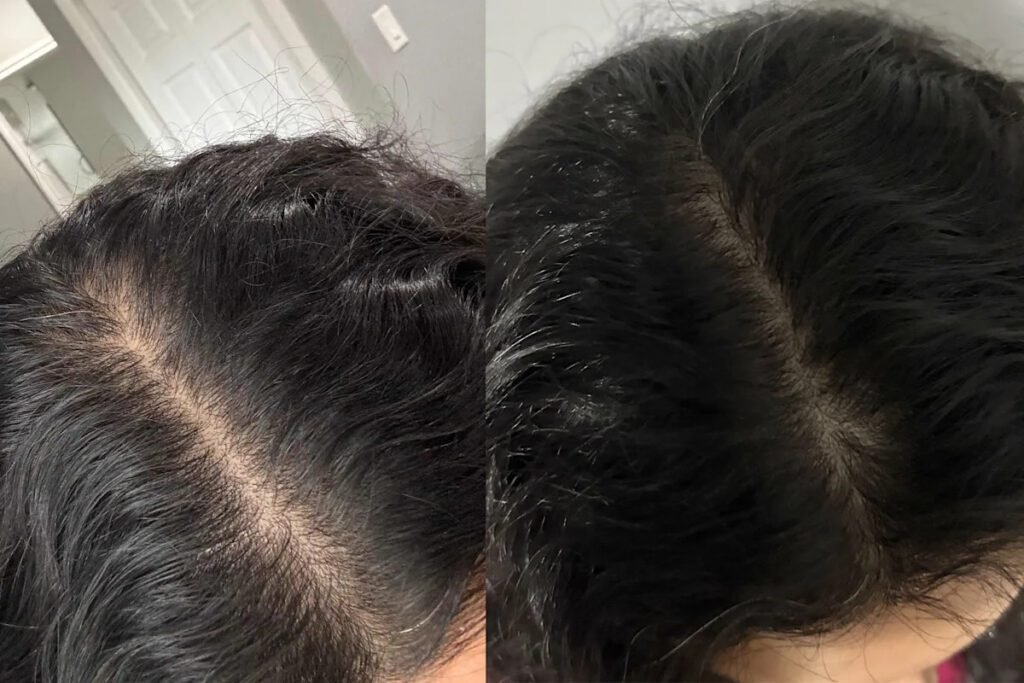Understanding Thinning Hair: Causes, Treatments, and Solutions
In today’s world, it’s not uncommon for individuals to question their hair health at a younger age. Many are left wondering, “Why is my hair thinning?” This concern is increasingly shared, especially among those in their late 20s. While shedding some hair daily is normal, persistent thinning can be linked to various underlying issues. Notably, these changes can significantly impact one’s mood, confidence, and self-esteem.
Disclaimer: This article provides general information and should not be considered a substitute for professional medical advice. Always consult a qualified medical professional for personalized recommendations.
What Causes Hair Loss and Thinning in Women?
Hair thinning does not have a single cause but can be attributed to several common factors:
- Androgenetic Alopecia: Known as female pattern hair loss, it affects approximately 40-50% of women by their 40s.
- Telogen Effluvium: This form of hair shedding often leads to noticeable white bulbs at the end of the hair strands and can affect up to 70% of women at some point in their lives.
Dr. Renée Beach, a Toronto-based dermatologist, explains that telogen effluvium can result from various triggers, including:
- Childbirth
- Bereavement
- Blood loss
- Low iron levels
Hair thinning can occur unexpectedly and can affect women at any age.
Common Types of Hair Thinning
The location of hair thinning can provide insights into its causes. Here are the most frequently observed areas:
- Crown: Thinning here is typical for androgenetic alopecia.
- Temples: Recession can be noted in both androgenetic alopecia and telogen effluvium. In telogen effluvium, fine baby hairs often indicate regrowth.
- Hairline: This can diminish due to traction alopecia—a result of hairstyles that pull on the hair.
Effective Treatments for Hair Thinning
Finding a universal solution for hair thinning is challenging, but certain treatments have shown effectiveness:
- Minoxidil: A widely recommended solution for thinning hair, available as Rogaine and similar brands. Dr. Beach states that a 5% lotion or foam should be applied twice daily for optimal results over six months.
Important: Consistent application is crucial. Discontinuing treatment can reverse any gains made—similar to maintaining dental hygiene or regular nail trims.
Key Ingredients to Treat Thinning Hair
It’s essential to target the scalp rather than the hair itself, as the latter is non-living. The right ingredients can support hair growth and overall scalp health. Here are some beneficial components to look for:
- Biotin: Helps strengthen hair.
- Caffeine: Stimulates the scalp, promoting hair growth.
- Saw Palmetto: Blocks enzymes that contribute to hair thinning.
None of these alternatives can replace the efficacy of minoxidil, but they can be useful adjuncts.
Leave-in Products and Hair Growth
Leave-in treatments are often more effective than those that are washed out. Consider incorporating the following ingredients into your daily routine:
- Amino acids such as arginine: Essential for hair health.
- Personalized treatments based on individual needs (consult a healthcare provider).
Documented Success Stories
Patients addressing vitamin deficiencies, such as through supplements and targeted treatments, have reported noticeable improvements. In just six weeks, some individuals have experienced less hair loss and thicker, more voluminous hair.
Recommended Products for Thinning Hair in 2025
For those seeking to address thinning hair, consider the following categories:
Best Leave-In Treatments
Best Shampoos
- Brand A: Formulated for hair loss prevention.
- Brand B: Contains key ingredients to stimulate scalp health.
Best Conditioners
- Conditioner A: Nourishes and strengthens hair.
- Conditioner B: Targets thinning areas with concentrated ingredients.
Conclusion
Thinning hair can be a distressing experience, but understanding its causes and seeking appropriate treatments can foster a positive outlook. It’s vital to consult with healthcare professionals to develop a tailored plan that addresses the specific needs of your scalp and hair.
Explore different options to enhance your hair health, and don’t hesitate to share your experiences with treatments that have worked for you.
Follow us on social media to stay updated on the latest in hair care, beauty tips, and wellness. Share your thoughts by commenting below or tweeting us @YahooStyleCA!


